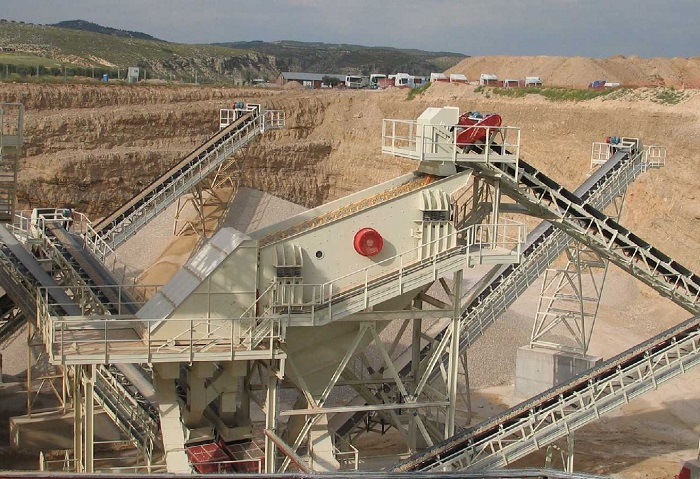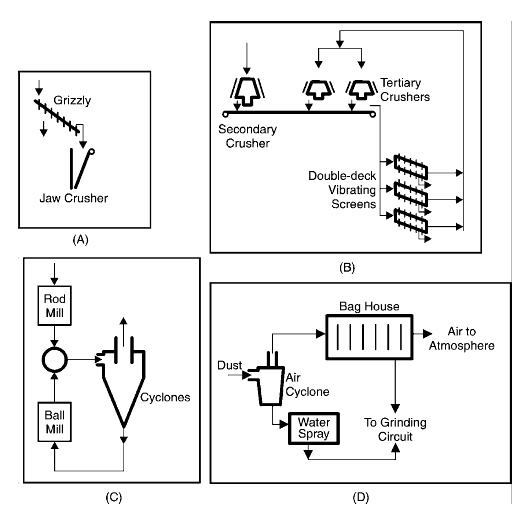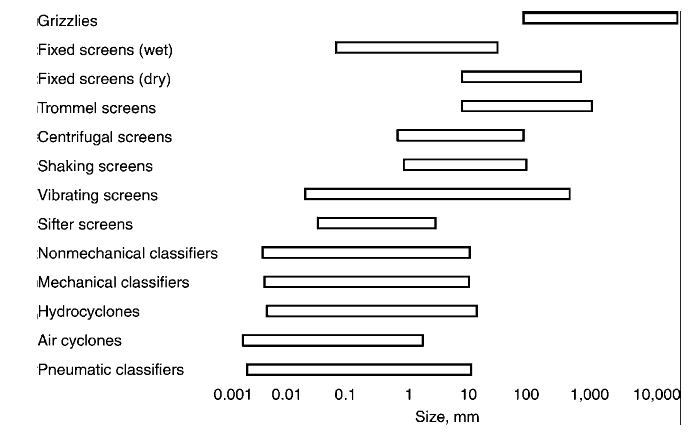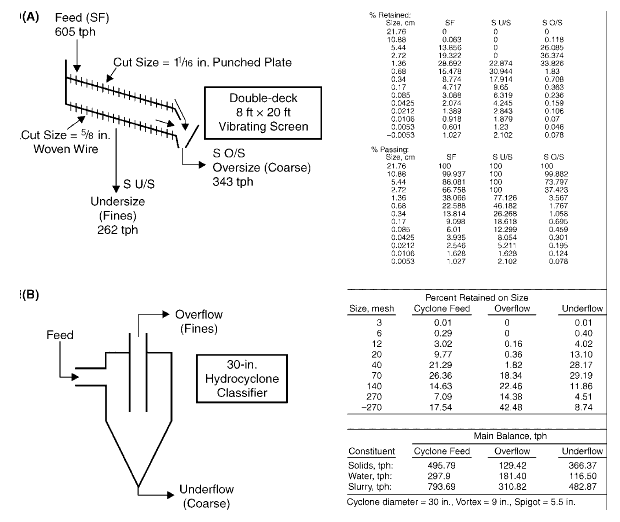Size separation is the parceling of particulate material on the basis of size. In mineral processing plants, such parceling means that the transfer of material unsuited for a specific processing step (such as the transfer of fines to a primary jaw crusher or the transfer of oversize to flotation machine) is avoided to improve the performance or efficiency of equipment or metallurgical processes. Devices employed for size separation may be screens (grizzlies, fixed screens, revolving screens, shaking screens, and vibrating screens) or classifiers (nonmechanical classifiers, mechanical classifiers, cyclone classifiers, and pneumatic classifiers). Screens allow certain particles to pass through screen apertures, whereas classifiers act on particles suspended in a medium to separate them based on differences in characteristics such as particle size and specific gravity. In general, classifiers behave like imperfect screens.

Mineral processing circuits employ sizing devices for various reasons (Figure.1). Thus, a primary jaw crusher is fed with oversize from a grizzly to minimize packing by fines in the crushing chamber (Figure 1A). Secondary crusher and tertiary crusher discharge is conveyed to double-deck vibrating screens, which produce undersize for fine ore bins and oversize for tertiary crusher feed. This sequence eliminates packing by fines in tertiary crushers, reduces production of finely sized material, and (often) maximizes circuit throughput (Figure 1B). A hydrocyclone treats rod and ball mill discharge slurry to produce an overflow (fines stream) for flotation and an underflow (coarse stream) for ball mill feed. This sequence provides finished flotation feed immediately, minimizes slimes production, and permits higher circuit throughput (Figure 1C). An air cyclone treats dust from a screening plant collection system to eliminate fine particles from air and recover fine-valuable minerals otherwise lost to the atmosphere. Here, the air cyclone acts as a predust collector to reduce the dust load to the bag house (Figure 1D).

FIGURE 1 Applications of sizing devices
Size separators may serve a variety of other purposes in mineral processing, such as improving grinding circuit efficiency by continuously removing the product of final size from the circuit, improving metallurgical performance by desliming before flotation, or classifying the feed to a tabling operation. Applications include dewatering, trash removal, conveying, and media recovery. In other fields, size-separation devices produce narrow-size fractions of material for purposes such as road building and dam construction. Sizing devices may be placed in series or in parallel (i.e., multiple staging) for greater sizing efficiency or capacity.
Size-separation devices commonly are used with certain size ranges (Figure 2). Generally, screening devices are used to make coarser separations and classifiers are employed for finer ones. However, size ranges can overlap substantially.

FIGURE 2 Typical size ranges treated by common size-separating devices
Size distributions and mass balances associated with corresponding feed and product streams of typical sizing devices used in large-tonnage mineral processing plants are shown in Figure 3. The coarse product of screens is called the “oversize,” whereas the fine product is referred to as the “undersize.” The coarse product of classifiers that treat slurry is called the “underflow,” and the fine product is called the “overflow.”

FIGURE 3 Size distributions and balances around size separators